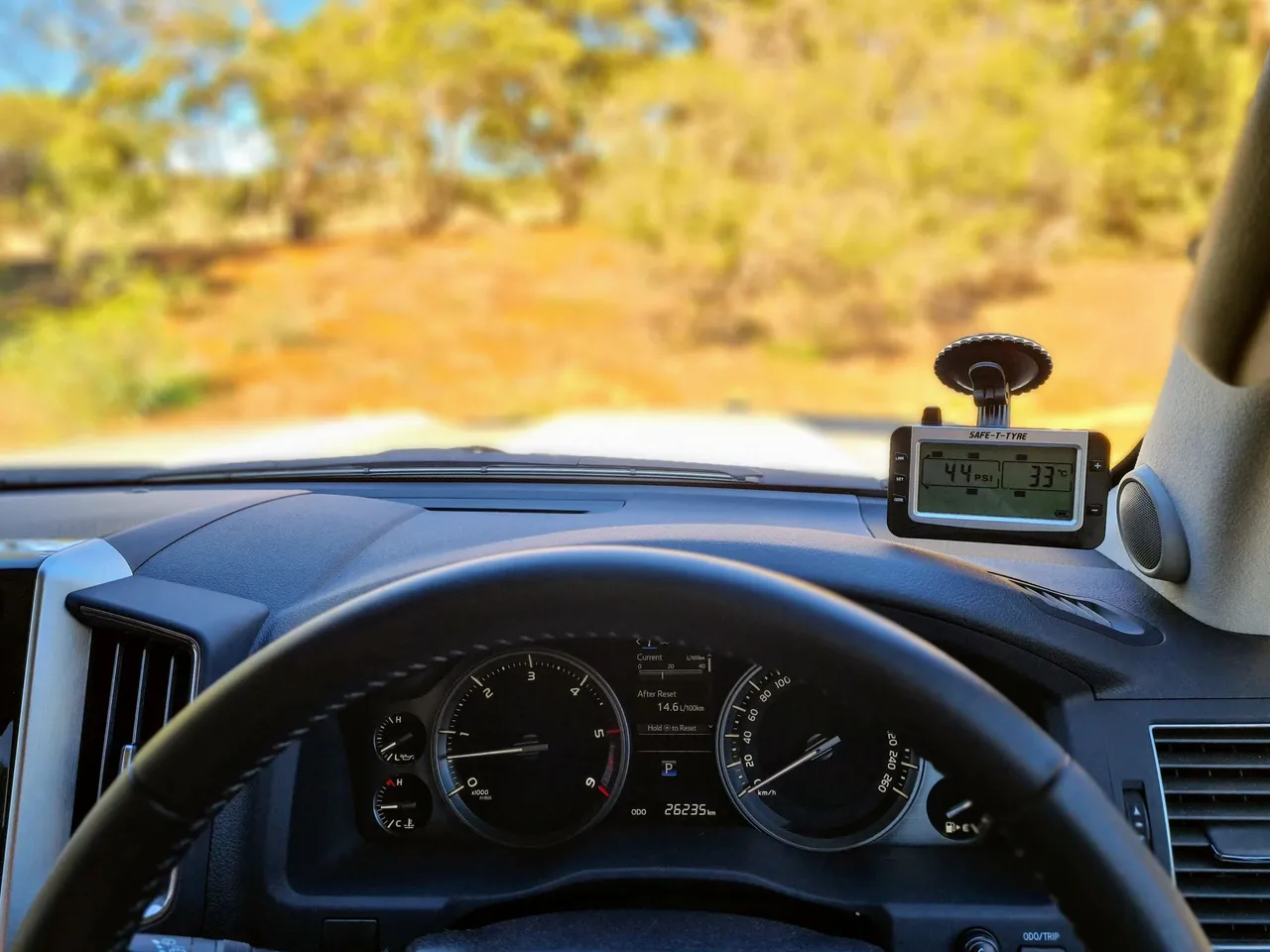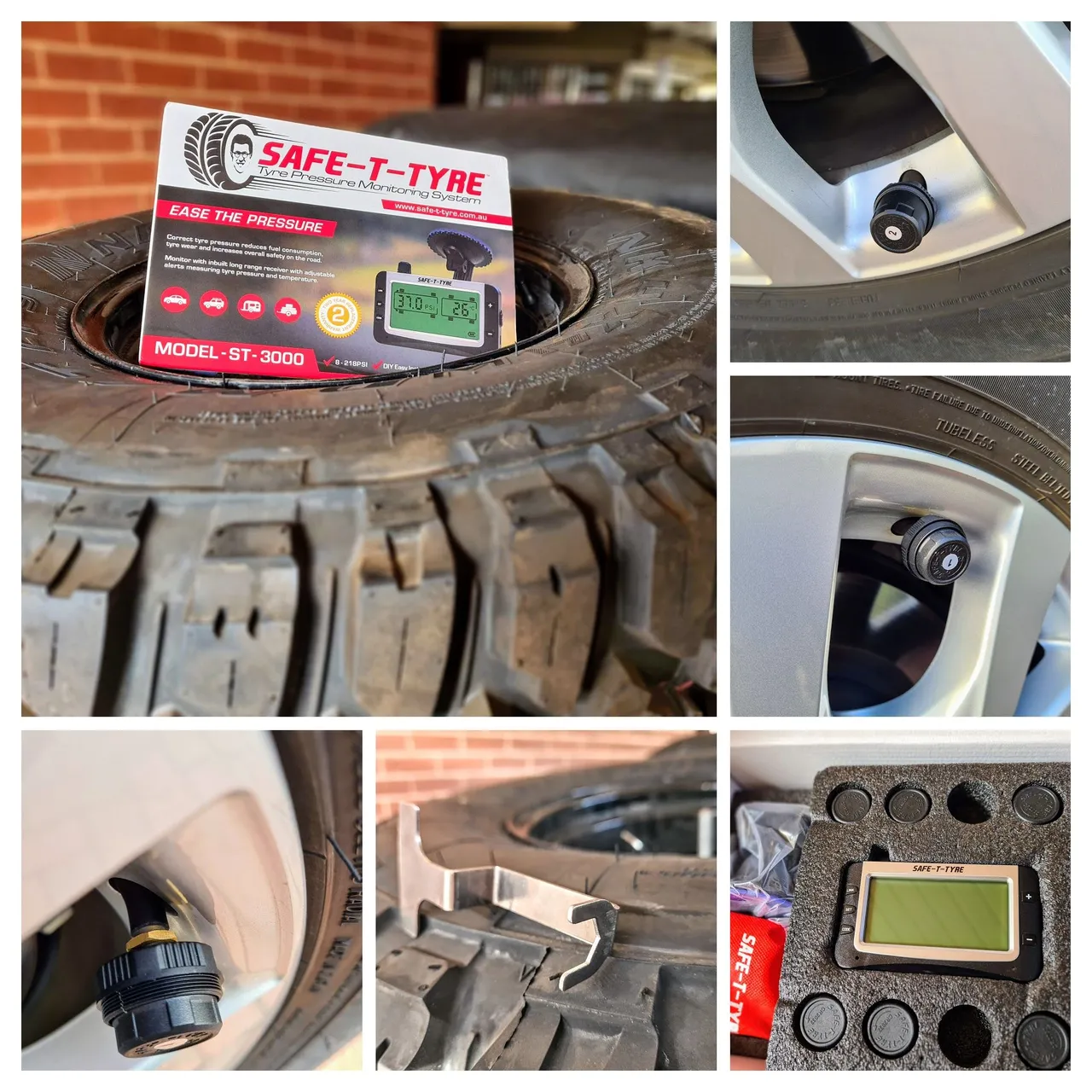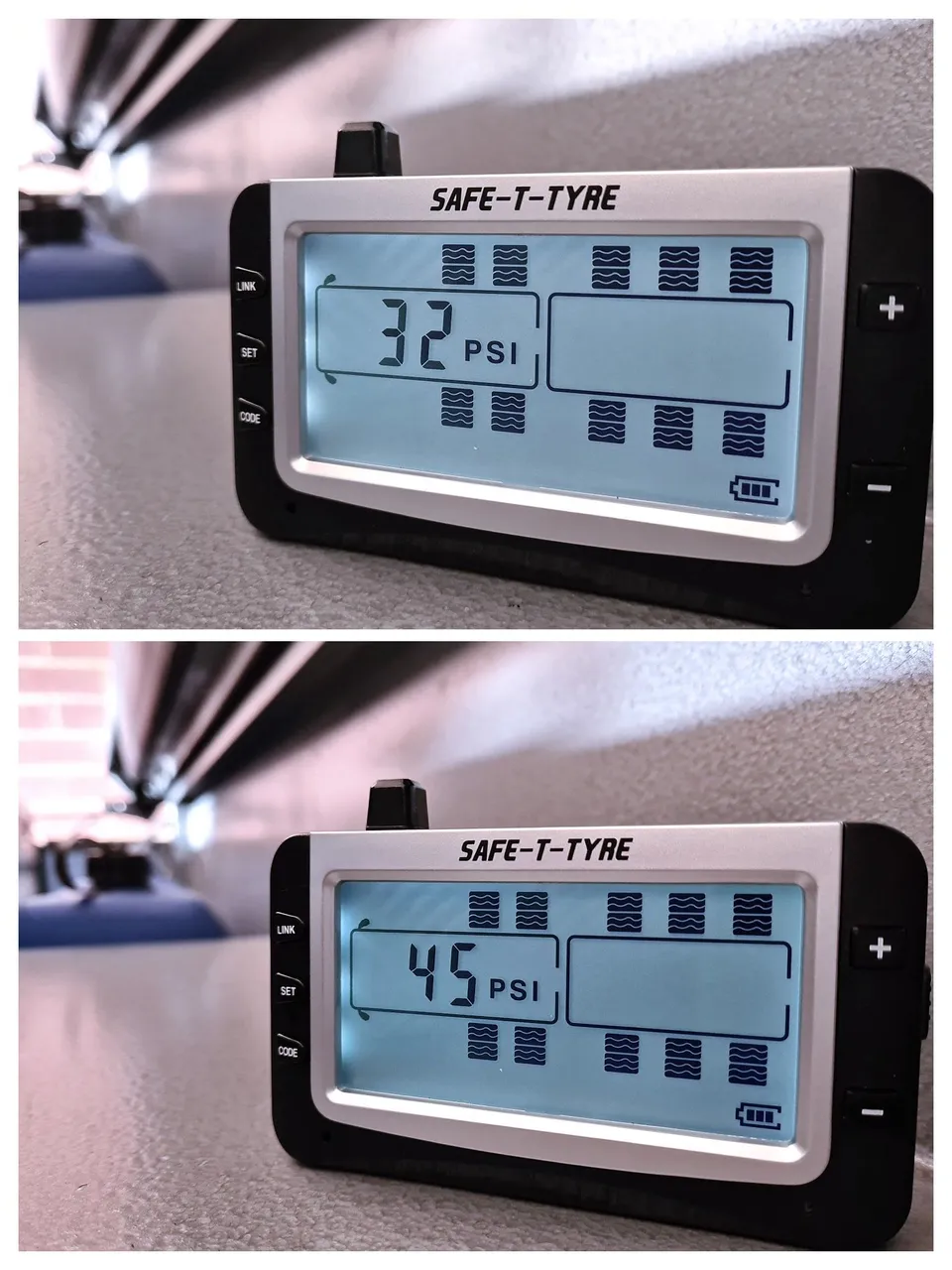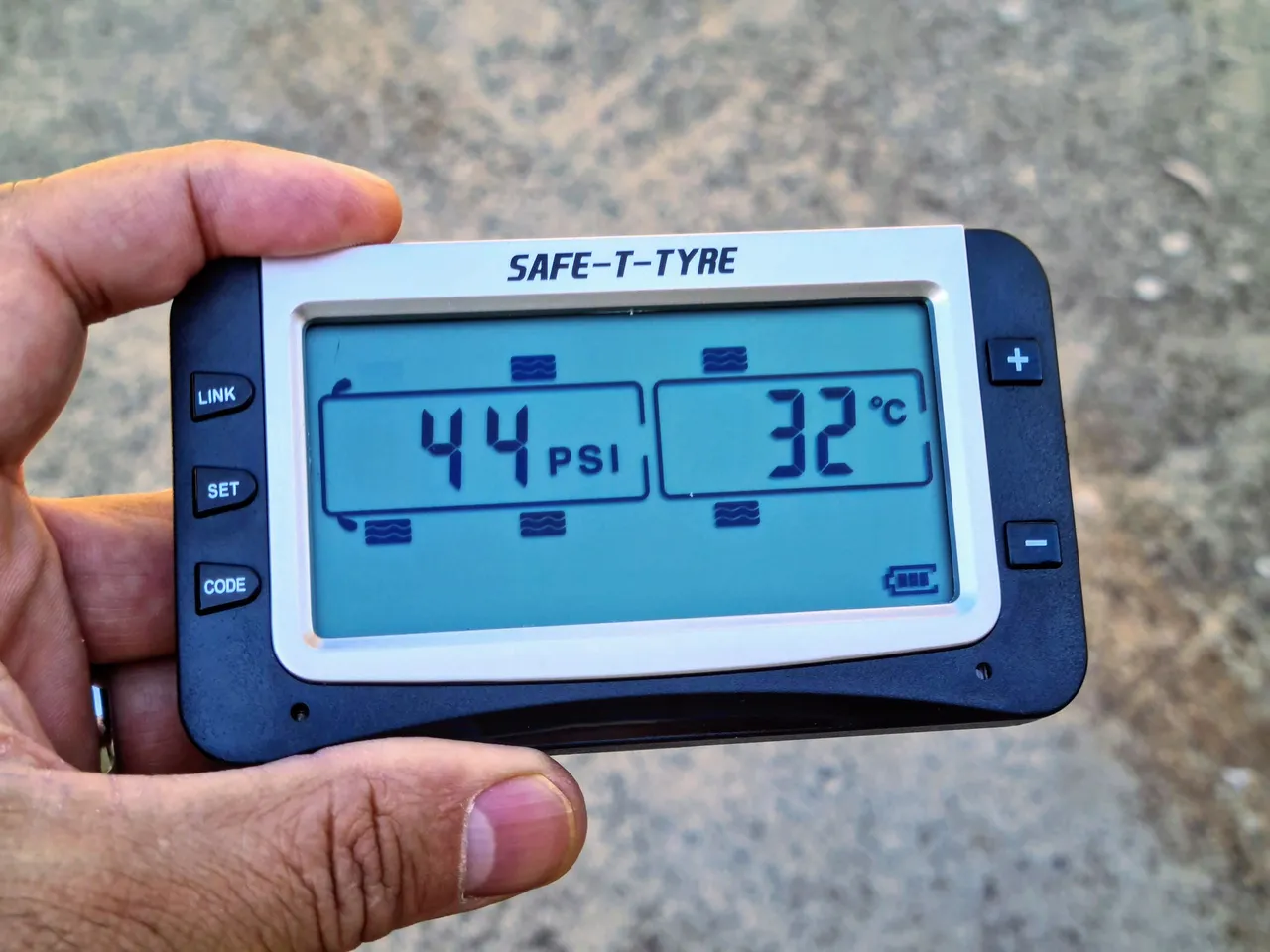A few weeks ago I had an unfortunate, potentially dangerous and costly event take place as I was heading out to go camping - I was doing 120kp/h on Highway One towing my off-road camper trailer and completely shredded a tyre off the rim after it deflated for some unknown reason; A puncture or faulty valve is probably the culprit and once the tyre-wall heated up it simply shredded away. You can see a post on it right here if you want the full story and images.
I put the trailer's spare wheel on and kept rolling but couldn't get a replacement until days later when I returned home and then it cost me a couple hundred dollars for a new one, and that was a cheap one, not the $400UD cost for the same brand that got shredded. You can see the post on the replacement process here if you're keen.
Considering that shredding a tyre at that speed could go very badly I decided to revisit a gadget that I have had before and on Friday last week it arrived. Over the weekend I set it up and thought I'd share a little information and some images about it here.

Tyre pressure monitoring system - TPMS
TPMS is a simple system of sensors that screw onto the air valves on each tyre and send the tyre pressure and temperature of each tyre to a head unit within the vehicle. It rolls through each tyre for about 3-5 seconds and constantly works its way around all the tyres on a continually rotating basis. One can set high and low pressure settings and if the tyre pressure, or temperature, drops or raises outside of those parameters an alarm sounds and the head unit identifies the tyre that has the fault. Simple.
Had I had this fitted a few weeks ago I would have known the tyre pressure had dropped below optimal operating pressure and was heating up. I could have pulled over, got my compressor out and pumped up the tyre to avoid shredding it. Alas, I didn't have it fitted.
Back in 2015 I purchased one of these units and had it fitted since, on my trailer and tow-vehicle. I ended up removing it and giving it to a mate who was doing an around Australia trip - I thought it would be nice to help him out...I never saw him again and never got my TPMS back...Goodbye $490AUD.
Last week I decided to buy a new one, the upgraded version, and managed to get a little discount so paid only $400AUD shipped to my door. I was happy with that - Now to fit it.
External versus internal
Before I get to the fitting thing though I want to say a word or so on the merits of external over internal TPMS senders. I've had experience with both.
My last truck had a TPMS system from the factory which were internal, basically the air valves on each tyre incorporated a TPMS sender and they would alert me with a light and alarm to low pressure [no high pressure or temperature sensing though].
It worked fine until a little moisture affected one and it started to malfunction. It was replaced under warranty. Then another went the same way. Replaced also. Then the first one that was already replaced went kaput again...Getting my drift? Fncking annoying especially since I had to put up with the alarm for days before I could get the truck in to the workshop for the change over.
With these external units they can simply be replaced by me should one be faulty although in the four years I had the last ones that never happened. So, I prefer the external ones that are not integrated into the vehicles computer system. It also means I can add sensors for my trailer.
What's in the box
Display head unit [rechargeable lithium battery powered], window suction mount, charger, six sensors [4 for the tow vehicle and 2 for the trailer], lock nuts and wrench, spare batteries and storage pouch. The unit can monitor up to 22 tyres although I only need 6 so that's what I ordered.
The installation
The sender units come pre-programmed, in my case 1 to 6 and have a set place upon the vehicle - Put the wrong one in the wrong place and it'll still report, but the head unit will show the incorrect tyre. I.e. number 2 on the right front would show the left front tyre at fault.
So it's #1 on right front, #2 on left front, #3 on right rear, #4 on left rear, #5 on trailer right and #6 on trailer left. I could have got an 8-tyre set and done the vehicle and trailer spare also but chose not to as it seemed a waste of money.
To prevent theft there's a lock-nut system which is one of the upgrades from the previous unit which used an annoying as fnck grub screw. Good work chaps, great improvement.

It's simple to install the pressure sensors; Just remove the existing valve cap, screw on the lock nut, place the back dust cover section on, screw on the actual sender until tight then hold it whilst the lock-nut is tightened up against the back of it to prevent theft. Screw the front of the dust cover and move on to the next. The images above show the process, the little lock-nut wrench and how the unit is packaged when it arrived.
Programming
This is actually quite a bit easier on this unit than with the last - Basically a simple process of using the set button on the head unit to access the set-feature then choose C° or F° for temperature and PSI or BAR for pressure then scroll through each set of tyres setting the high-pressure tolerance and the low-pressure tolerance. Press and hold set for 3 seconds and you're done. From there one needs to mount the window suction mount which has also been pleasingly upgraded from the crappy one on the last model and that's about job done really.

Above you can see the low and high pressure tolerances being set. I ended up using 48psi for the high and 30psi for the low. The temperature is preset at 70C° which I was happy with however it too can be reset. Here you'll note all 22 tyres are shown, except the front two which are the ones being set in these images.
Operation
There's an on and off button on the head unit which is good as I'll not always have it on, like around the city, as there's little point. When on it simply scrolls through the tyres one by one and identifies the tyre being reported on by blinking it. Of course, I won't always have my trailer attached and so that needs to be unlinked when not being towed and linked back up when it is. A press on the link and (-) button does that.
The head unit charges in about 2 hours and will last for about 80 hours on one charge and as with all rechargeable lithium batteries doesn't like being permanently plugged to charge. The USB charging cable handles that job though so it's easy enough to charge on the run whilst travelling or prior to taking a trip.

Above you can see how small the unit is and in the main image at the top you can see that it's fairly unobtrusive when mounted to the glass. You'll also note in the image above that the trailer is linked and that only 6 tyres are shown, not the 22 as above. The right front is blinking as that was the one being reported on when I took the photo. You can see the pressure at 44psi and its temperature is 32C° both of which are within tolerance.
My impressions
I really like this gadget; I loved the last one but love this one more. It's easy to use, accurate and will do exactly what it is supposed to do. Sure, the sender units look a little bulky on the wheels but so what? I like the new security lock-nut and the addition of the dust caps. The head-unit is a little smaller too. All good improvements
There's a slight downside to the units which is they take time to remove so adding air, or taking air out to off-road, takes longer. But that's not done every day and as for adding air, one only needs to check the TPMS to see whether it actually needs doing and so it's possibly a time-saver through not having to check them all manually. It's a small downside only.
Tyre pressures are important. I check all my vehicles each week, on Sunday morning actually, and have a high-output [portable] compressor that I use to do the job. I need to do a post on that actually, I haven't forgotten @bigtom13, I'll get to it this week I hope.
If I had had this thing fitted a few weeks ago I would not have shredded a $400 tyre, even if it rapidly deflated, as the unit has a fast-leakage alarm built in. Tyre loses pressure, alarm goes off and I pull over - Simple. I've got it now though and I feel pretty good to have it fitted - I will not be loaning this one to a mate, that's for certain. Sure, it cost $400 which is a fair amount of money, but shredded or blown-out tyres can be dangerous, let alone costly, and so I think it's money well spent
Design and create your ideal life, don't live it by default - Tomorrow isn't promised so be humble and kind
Discord: galenkp#9209